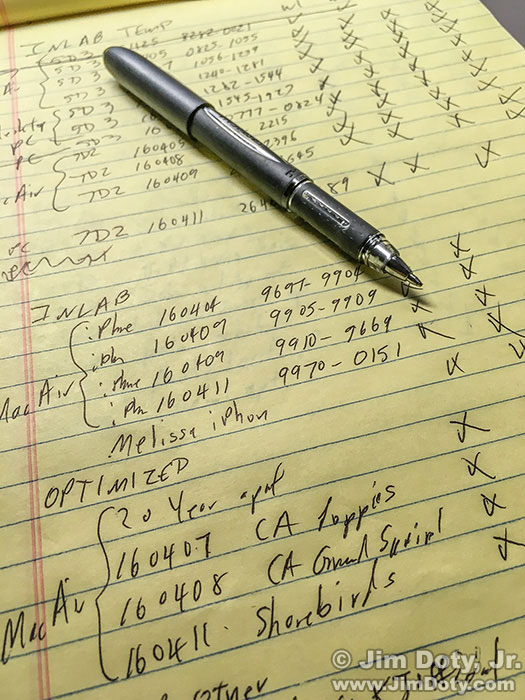 This article has been updated here.
This article has been updated here.
Earlier this week I read about a professional photographer who lost a bunch of photos because they were all on just one external hard drive with no backups. The cost of recovering the photos, if they can be recovered at all, will run between $500 and $5000 depending on the number of photos and the complications involved in the recovery process.
Several photo magazine articles have been written recently about the “3-2-1 backup plan”. Despite that, the word still isn’t out there. I get emails on a regular basis from people who have lost precious photos. Some of the photos can be recovered and some of the photos are lost forever. So it is time once again to talk about a good backup plan.
Not that long ago, the common advice was to have two copies of all your digital photos on two separate hard drives. The problem with that advice, as many people discovered, was if one hard drive failed, the other hard drive was often the same age and also failed as the photos were being copied, with many of the photos being lost.
3-2-1 Backup Plan
So the current advice is to have at least three copies of your photos on at least two different kinds of media, with at least one set of your photos living off site (hence the 3-2-1 designation). If you have two sets of your photos on two different external hard drives, the third set should be on something different, like optical discs (DVD or Blu-Ray), or magnetic tape.
If you keep two copies of all your photos at home, the third copy of all your photos should be somewhere else (like your office, a friend’s house, a safe deposit box, or at a storage facility). If there is a disaster (tornado, fire, or flood) at your primary photo location, you don’t want to lose all your photos because they are all in one place.
Sure it is a bother to make three copies of everything, but if you have heard all the stories I have heard about treasured photos lost, you would understand why this is so important.
Backup Process
When I get home from a photo trip, I download the memory cards and copy all the photos to three different hard drives, and also a fourth copy on Blu-Ray discs. I use the program Folder Match to make sure everything gets copied exactly, and my Blu-Ray software verifies that the Blu-Ray disc is an exact match to all the folders on my hard drive. Usually everything copies over just fine, but every once in a while several files don’t copy correctly or at all. Folder Match saves me a lot of time making sure everything copied correctly.
Once everything is copied and verified, one external hard drive goes to a friend’s house across town. It is not unusual for a pair of photographers who are good friends to keep their third backup drives at each others homes.
Some of my memory cards end up being downloaded to folders on my MacBook Air when I am on the road. Those folders get copied to external drives and Blu-Ray discs first when I get home. Then I download the rest of the memory cards and copy them to drives and discs.
Backup On the Road
I also carry two small external hard drives when I am traveling. They are about the size of a deck of cards. Everything that gets downloaded to my MacBook Air when I am traveling get backed up to these two portable drives. One lives in my laptop briefcase and the other lives in my photo backpack. These are just temporary hard drives and the folders get deleted once they have been backed up to my three primary hard drives and Blu-Ray discs.
Keeping Track of Everything
To make sure I don’t miss anything in the process, I keep a check list (see the photo above) of every folder to make sure each folder is copied (a check mark) and then verified with Folder Match (a slash across each check mark). When everything is copied and verified to three hard drives plus Blu-Ray discs, I delete the folders from my laptop and format the memory cards so they are read for the next trip.
The check list above is from a trip to California earlier this month.
Hard Drive Recovery
If you do lose a bunch of photos in a hard drive crash and you have no backups, I highly recommend DriveSavers. They are one of the top rated drive recovery services in the U.S. They are not cheap. They are very good.
Good Memory Card Practices
Some photo get lost before they are downloaded, or even in the downloading process. There are things you can do to prevent that. If you do the right things (and avoid doing the wrong things) there are ways to recover lost memory card photos. Check out the links below.
This article was originally posted April 30, 2016. Updated November 22, 2016.
Links
Memory Cards Part 1: The Best Way To Use Memory Cards To Avoid Lost Images
